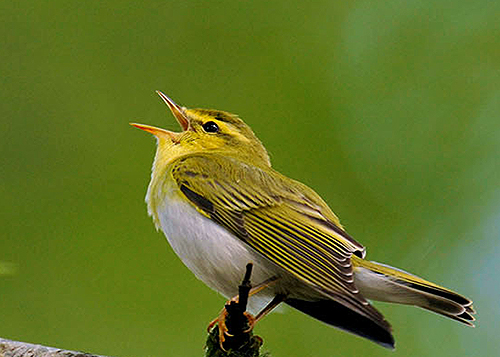Asturias, a verdant region in northern Spain, is a paradise for birdwatching enthusiasts. Nestled between the rugged mountains and the Cantabrian Sea, towns such as Ribadesella, Villaviciosa, Cabrales, Onís, and Ponga offer diverse habitats that attract a rich variety of bird species. For those looking to explore the avian wonders of this enchanting area, this article will highlight the key species to observe and the best locations for birdwatching.
Ribadesella: Coastal Wonders
Ribadesella, known for its picturesque coastline and the stunning Sierra del Sueve, provides an ideal setting for birdwatching. The estuary and beach areas are particularly rewarding, especially during migration seasons.
Notable Species:
- Common Eider (Somateria mollissima): These large sea ducks are often spotted on the waters along the coast. Their striking plumage, especially the males’ distinctive black and white feathers, makes them a highlight for birdwatchers.
- Little Egret (Egretta garzetta): Graceful and elegant, this white heron can often be seen foraging along the estuary’s mudflats. Its striking appearance and feeding habits are fascinating to observe.
- Red-billed Chough (Pyrrhocorax pyrrhocorax): With its glossy black feathers and bright red bill, the chough is a charismatic bird often found in coastal cliffs. Its acrobatic flight is a delight to watch.
Villaviciosa: Estuary and Wetlands
Villaviciosa boasts the largest estuary in Asturias, making it a significant habitat for a plethora of bird species. The diverse environments—salt marshes, mudflats, and woodland—provide a perfect backdrop for birdwatching.
Notable Species:
- Black-tailed Godwit (Limosa limosa): This wader is often seen in the mudflats of the estuary. With its long legs and strikingly long bill, it is a favourite among birders, particularly during migration.
- Spoonbill (Platalea leucorodia): Recognizable by its distinctive spoon-shaped bill, the spoonbill is often seen wading through shallow waters. Observing its feeding technique is both fascinating and entertaining.
- Marsh Harrier (Circus aeruginosus): This magnificent raptor can be seen gliding over the wetlands, hunting for small mammals and birds. Its impressive wingspan and graceful flight make it a memorable sight.

Cabrales: Mountain Birds
Cabrales, known for its dramatic landscapes and rich biodiversity, is home to several mountain-dwelling species. The rugged terrain and varied altitudes create unique habitats.
Notable Species:
- Golden Eagle (Aquila chrysaetos): A symbol of wilderness, the golden eagle can often be seen soaring high above the mountains. Its impressive size and hunting prowess make it a coveted sight for birdwatchers.
- Alpine Accentor (Prunella collaris): This small, secretive bird is typically found in rocky areas at higher elevations. Its melodic song and unique markings are a treat for those lucky enough to spot it.
- European Griffon Vulture (Gyps fulvus): These majestic birds can be seen gliding on thermals, often in search of carrion. Their impressive wingspan and social behaviour make them fascinating to observe.
Onís: Lakes and Forests
Onís, with its stunning lakes and lush forests, offers a different perspective on birdwatching. The area is rich in biodiversity, attracting numerous species throughout the year.
Notable Species:
- European Robin (Erithacus rubecula): This charming little bird is a common sight in the forests. Its vibrant orange breast and melodious song make it a beloved species among birdwatchers.
- Nuthatch (Sitta europaea): Known for its unique ability to climb down trees headfirst, the nuthatch is a delightful bird to observe. Its striking blue-grey plumage and distinctive call are key features.
- Firecrest (Regulus ignicapilla): One of Europe’s smallest birds, the firecrest is easily identified by its vibrant crown and lively behaviour. Spotting this tiny gem is a special treat for birdwatchers.

Ponga: A Hidden Gem
Ponga, part of the Ponga Nature Park, is a lesser-known but incredibly rewarding birdwatching destination. The combination of rugged cliffs, dense forests, and stunning vistas attracts a variety of birdlife.
Notable Species:
- Eurasian Treecreeper (Certhia familiaris): This small, unobtrusive bird is often seen creeping up tree trunks in search of insects. Its subtle beauty and secretive nature make it a joy to spot.
- Wallcreeper (Tichodroma muraria): This stunning bird, known for its bright red underwings, is often found in rocky areas and cliffs. Its elusive nature adds to the thrill of spotting it.
- Western Bonelli’s Warbler (Phylloscopus bonelli): This small warbler is often found in wooded areas. Its distinctive call and lively movements are a delight for birdwatchers.

Conclusion
Birdwatching in Ribadesella, Villaviciosa, Cabrales, Onís, and Ponga offers an unforgettable experience, showcasing the rich avian diversity of Asturias. Whether you are an experienced birder or a casual observer, the stunning landscapes and unique species of this region will captivate your senses. Plan your visit during migration seasons for the best opportunities to witness the spectacular array of birds that call Asturias home.
Nestled along the stunning coastline of eastern Asturias, Ribadesella and Villaviciosa offer a unique opportunity for birdwatching enthusiasts. This region, with its diverse landscapes of coastal cliffs, estuaries, and lush forests, is home to a variety of bird species, making it an ideal destination for both novice and experienced birdwatchers.
